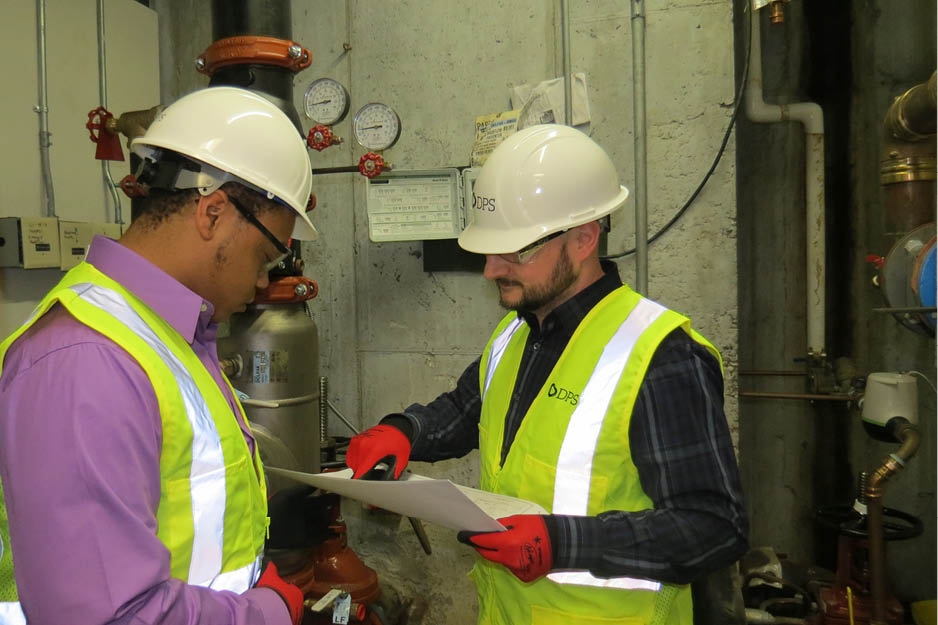
While the goal of every project should be to achieve a one-hundred percent safety record throughout all phases, no project is one-hundred percent without risk. Field Commissioning activities, along with construction, provide some of the greatest risk profiles to personnel and equipment. Several key factors drive this risk and appropriate mitigation efforts must be in place to ensure a safe work environment.
Planning
Often overlooked, but no less important, the Planning phase is where safety should be reviewed before the commissioning even begins. A thorough understanding of the project scope during the planning phase is required to develop the schedule for the various system and equipment commissioning. The schedule can be part of the commissioning safety plan, which will address various coordination requirements, such as the impact of systems becoming energized at various points during the commissioning timeline. This could potentially necessitate a change in procedures including safe plan of action (SPA) forms or restricting personnel access in a rolling manner. It is imperative during the planning stages that a review of any required training for the staff should be identified in tandem with a training schedule. In addition, an assessment of any procedural differences between the Safety Procedures of the owner, contractors, construction firm, etc. to verify which procedures will be followed and how they need to be ocumented, should all be completed during a Planning phase. As a safety check point, consider incorporating “lessons learned” into the front-end planning of the commissioning efforts and review any concerns from similar past projects. During Planning, the systems and equipment within the commissioning scope should be reviewed for the location and accessibility of the isolation and shut-off mechanisms to ensure the required safety procedures can be executed. If additional measures are required for proper isolation or de-energization, it should be coordinated at this point and integrated into the schedule. If there are additional systems or equipment within the construction area which are out of scope—but are potentially energized or present a hazard—they must be identified and procedures implemented as part of the assessment during the safety planning. Since Commissioning is typically one of the last activities prior to turn over, a project running behind schedule will frequently lead to a team rushing through the process, and it is under these circumstances that an error can occur due to fatigue or poor judgment. Contingencies such as this should be evaluated and implemented to mitigate these risks during the Planning Stage. Lastly, ensuring all stakeholders are involved and invested in the safety process is equally as important, as is the staffing of competent and experienced personnel to reduce the probability of safety issues during execution.
Training & Procedures
Corporate and Site Safety Procedures should be reviewed early in the project, preferably during the Planning phase to facilitate a Project Safety plan, if required. As such, any Project Safety plan should be developed prior to the March 2018 1 start of field commission activities, and should address contact lists, emergency notification procedures, a list of first responders and trained medical personal and incident reporting protocol. Additional sections of the Safety Plan should specify Personnel Safety Training Required and how it should be documented (if not captured, under Corporate or Site Safety). Any specific evacuation procedures should also be reviewed and distributed to all personal on site, including visitors as required. A review of this Safety Plan should be part of the onboarding of all personnel involved with the commissioning. Specialized training such as a confined space entry or hazardous environment procedures should be conducted and documented well in advance of the requirement of such activities to ensure safe and compliant execution of commissioning activities. Any special hazardous material handling procedures should also be reviewed along with the appropriate Safety Data Sheets (SDS) for these materials. If there is a need for any measuring equipment or devices, all required training for personnel operating this equipment should be coordinated with users and appropriately documented prior to the requirements of use. One of the best mitigations for safety risk in the field is alert and safety-committed personnel who are following well understood and appropriate safety procedures.
Coordination
One of the highest risks occurs when various construction personnel (i.e. trades), owners, and commissioning personnel are all occupying a space while still classified as an active construction area. Due to the nature of Commissioning, frequently systems will be energized for testing while the immediate area is occupied by other non-commissioning personnel. This creates additional risks due to the various potential hazards. There is a need to ensure that all personnel who will be entering the area while any systems are energized are informed of the risks of all the activities within the work space to ensure appropriate actions will be taken. There are also risks associated with the site beyond just energized systems, and personnel in the work area should be informed and made fully aware of such risks. Daily coordination meetings and a published schedule to include accurate times are helpful if not required efforts. Of special note are systems which once energized remain hazardous if not specifically removed (i.e. a pressure vessel filled as part of a flow test, but not vented) might not be obvious to personnel working in the area at a different period of time or on related systems. Notification procedures, labels, and Lock-Out Tag-Out (LOTO) are part of the mitigation procedures for these types of situations. A process for ownership of a system or piece of equipment should be part of the safety process. Projects involving Hot Work and associated permits may require access restrictions to certain areas and coordination is required to prevent schedule or execution conflicts. It may be required to share equipment, such as ladders, lifts or chain falls (i.e. tank entry) during commissioning. It is important to make sure all required coordination (included training and documentation) is completed so as not to impact schedule. Proper use and associated training reviewed and established in the Planning stage will save time at this stage. In many projects there exists the potential for off-shift work or work across shift changes for some of the personnel involved in the construction and commissioning efforts.
If these types of situations are not clearly addressed in the Safety Plan, coordination and some form of documentation at shift hand-off is highly recommended
Execution
During execution, all personnel involved should understand the test intent, the procedures, hazards, and have walked down the system to best understand how to react in a crisis, including isolation or de-energization procedures. The physical space where the system or equipment is located should be assessed for other potential hazards including other ongoing activities and personnel flow. Access to remote equipment may require ascending to elevated areas. Proper access to these areas such as fixed ladders and platforms should be used as intended and any tie off procedures needs to be reviewed and followed. Hazards including pressure, temperature, material projection, inhalation, elevated noise levels, cut and abrasion hazards, and low light conditions are present to varying degrees on projects and an understanding of the monitoring of these hazards (pressure gauges, warning lights, level indicators, no-access signage, etc.) should be part of the situational awareness of the field execution staff. Confined space entry typically requires a minimum number of personnel and work should NEVER be performed without the specified requirements. All personnel should understand that safety is the number one priority and anyone should feel comfortable calling a halt to work or unsafe acts.
Equipment
While personal protection equipment (PPE) such as head, eye, and foot protection are standard equipment for most job sites, there must be an additional assessment during the planning stage to identify the additional safety equipment that must be used for site specific conditions. Sufficient PPE should be available for visitors and other temporary personnel not assigned to the project specifically, but who might require access to this area. This should be done on a regular basis (depending on the duration of the effort). Gloves, aprons, face shields, etc. should be available in either adjustable sizes or in appropriate sizes as required. All required safety equipment must be accessible to the personnel needing the equipment at the time of execution. The locations for storage of safety equipment should be identified and this should be part of the Project Safety Plan as associated training.
In conclusion, while Field Commissioning may have a higher risk profile than other aspects of projects, there is no reason why proper Planning, Training, Execution, and Equipment cannot mitigate the risk to a minimal level.
By Jeff Gerstein, Director of CQV DPS Group, Framingham, MA


